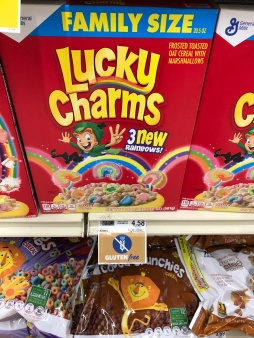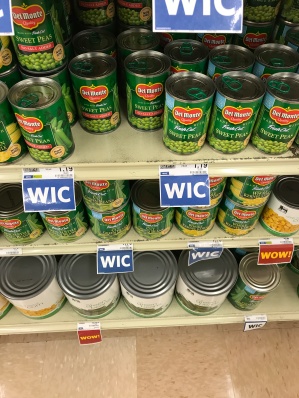Nutrition is complex. Dietary choices stem from an interaction of socio-political, environmental, interpersonal, and individual factors. So, when we acknowledge that Americans eat poorly, thus increasing the risk of noncommunicable diseases (e.g., obesity, cardiovascular disease, diabetes, etc.), placing concepts like “whole foods” and “fresh is best” on a nutrition pedestal as a feasible and system-wide solution is both unrealistic and detrimental. On the other hand, “processed foods” are vilified as non-nutritive dietary options that Americans must avoid.
I welcome Bailey Houghtaling to In Defense of Processed Food in another of this site’s collaboration with Don’t Eat the Pseudoscience. Bailey has just received her doctoral degree and is getting ready to start her academic career. She is joined by Lily Yang in providing a nutritional perspective on processed foods. Lily has appeared earlier on this site with a post on Bite Coin? How blockchain can help us keep track of food from farm to your plate.
Encouraging dietary behaviors that include fresh produce or products requiring extensive home preparations could be a feasible solution as long as consumers want to purchase such products and their environments support this desire (e.g.: fresh, whole fruits and vegetables are available, affordable, convenient, and desirable). However, in the past few decades, we have constructed and seen the rise of communities that value cheap/inexpensive foods that are easily prepared and consumed. Households that have the financial resources and time to fully support “whole food” movements are scarce.
Current dietary trends have sparked industry advertisements, health claims, and overuse of labels like “organic”, “gluten-free”, “raw”, and “natural” (that could confuse even the most seasoned nutrition professional) to make it seem as if all food not falling into one of these picked-off-the-ground-unrinsed-and-put-straight-on-your-plate-covered-in-dirt category should automatically be shunned.

This strong pushback against a convenient food economy has arisen from deleterious outcomes experienced as a result of Americans’ overconsumption of highly-processed foods/beverages and decreased physical activity. For example, products that are highly or “ultra”-processed tend to have a higher proportion of calories from saturated fat, added sugar, and sodium. Due to their perceived “delicious factors”, it is easy to consume more of these products faster, which when unmoderated, does indeed promote weight gain.
Yet, leisurely strolls to the farmers market to pay $10.00 for a few fist-fulls of lettuce coupled with afternoon plans that include a glass of wine and a 100-ingredient recipe (requiring much chopping and know-how) is a luxury few can afford. Indeed, cost (which includes time) and access continue to be the two biggest barriers to eating fresh fruits and vegetables. The dichotomy most negatively impacts consumers of lower socio-economic status, individuals living in rural communities and within low food access areas (formerly ‘food deserts’), and consumers with low food, nutrition, and health literacy.
In many rural and low income areas, if fresh options are available, they may be low quality, less nutritious, and not as desirable as options available in urban spaces. Taste and cost are also critical factors; consumers make food purchasing decisions based on perceived taste, and grocery expenditures are considered less important than immediate needs like housing and critical utilities. While there have been supportive policies that have decreased the gap between vulnerable American consumers and access to fresh, nutritious products (e.g.: Special Supplemental Nutrition Program for Women, Infants, and Children (WIC) package changes in 2009; USDA incentives for SNAP consumers to use farmers markets), more efforts are needed to bring nutritional and health balance and harmony to an otherwise polarizing food experience.

The term, “processed food” is often confused with high sodium, low fiber, and other anti-nutrition aspects of foods and beverages actually considered “ultra-processed”; products that are major contributors to Americans’ overconsumption of saturated fats, added sugars, and sodium. Seemingly ignored are canned and frozen produce (and lean meat/seafood) options (without the sauces and sugars that contribute to poor dietary quality), which can be healthy and highly convenient options for those who are unable to access the fresh, overpriced, and possibly stagnated ‘healthy’ products.
There simply needs to be more fruitful (haha) conversations surrounding the perceptions of processed foods and making educated/literate choices. Messaging surrounding processed options requires reframing, from the villain that consumers must avoid, to a community nutrition promotion staple. Also, there is ripe opportunity to encourage affordable and convenient healthy options through consumer innovations, public health-industry engagements, and policy adjustments.
For example, more opportunities for frozen meals meeting dietary guidelines recommendations and income constraints are required. Industry and food science stakeholders should evaluate consumer acceptability of healthy, canned and frozen fare in order to improve uptake of these products. Social marketing campaigns that focus on the ease of preparing or consuming these products and highlight the potential for household health and financial benefits could assist such efforts. Policies should incentivize opportunities for all consumers to choose palatable, convenient, and healthy products over unhealthy alternatives. Finally, we need to own our space in order to counter with the huge amounts of fear-based messaging and misinformation that can quickly be identified by a quick “what foods are healthy” internet search. Ultimately, we can help drive a more equitable food system that ensures all have access to information and environments that support safe and healthy products that are also affordable, convenient, and desirable.
____
 Bailey (@HoughtalingPhD) is a Registered Dietitian Nutritionist and recent PhD Graduate from Virginia Tech’s Department of Human Nutrition, Foods, and Exercise. Her recent work has focused on understanding key decision-makers’ capacity to create food environments that support healthy dietary choices (including canned and frozen options) in rural community settings. In July, Bailey is excited to join Louisiana State University’s School of Nutrition and Food Sciences as an Assistant Professor.
Bailey (@HoughtalingPhD) is a Registered Dietitian Nutritionist and recent PhD Graduate from Virginia Tech’s Department of Human Nutrition, Foods, and Exercise. Her recent work has focused on understanding key decision-makers’ capacity to create food environments that support healthy dietary choices (including canned and frozen options) in rural community settings. In July, Bailey is excited to join Louisiana State University’s School of Nutrition and Food Sciences as an Assistant Professor.
 Lily Yang is a post-doctoral researcher at Virginia Tech. She is also founding member and contributor of the science-based media communication channel, Don’t Eat the Pseudoscience (@DontEatPseudo). Her research focus specifically develops science communication and food safety programs for diverse populations.
Lily Yang is a post-doctoral researcher at Virginia Tech. She is also founding member and contributor of the science-based media communication channel, Don’t Eat the Pseudoscience (@DontEatPseudo). Her research focus specifically develops science communication and food safety programs for diverse populations.
Next week: The NIH Ultra-processed food study and its implications

6 thoughts on “Processed Food as Seen through a Public Health Nutrition Lens by Bailey Houghtaling and Lily Yang”